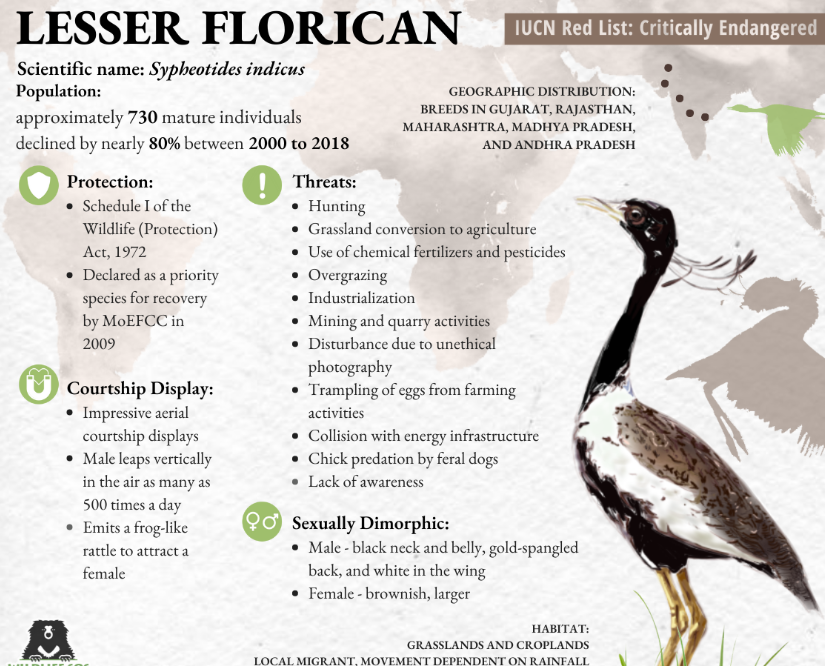Rajasthan
Decline in Lesser Florican Population
- 23 Oct 2025
- 3 min read
Why in News?
The Lesser Florican (Sypheotides indicus), commonly known as the “grass peacock”, is experiencing a drastic population decline in India.
Key Points
- About:
- According to a recent study by the Wildlife Institute of India (WII), the global population is now estimated to be only 150–200 individuals, with just 19 males sighted during the 2025 breeding season in Gujarat and Rajasthan.
- The population has declined by over 80% in the last 36 years, falling from 4,374 individuals in 1982 to about 150–200 in 2025.
- Repeated surveys conducted in 2017, 2018, and 2025 indicate a consistent and alarming downward trend.
- The remaining breeding populations are restricted mainly to Rajasthan and Gujarat.
- Their wintering sites include Maharashtra, Karnataka, and Telangana, and the birds migrate mainly at night, often covering 20–27 km per day.
- Telemetry studies on 12 individuals showed migration from Ajmer (Rajasthan) to the Deccan regions, covering up to 1,500 km.
- Conservation Efforts:
- A captive breeding centre has been established in Ajmer (Rajasthan), currently housing 10 birds (6 females and 4 males) with incubation and chick-rearing facilities.
- Awareness programmes have been conducted to educate over 3,000 students and 2,500 local villagers near nesting sites.
- The WII has initiated studies on husbandry and breeding protocols to develop long-term conservation strategies.
Lesser Florican (Sypheotides Indicus)
- It is one of three bustard species endemic to India, the others being the Bengal florican (Critically Endangered) and the Great Indian Bustard (Critically Endangered).
- It is the smallest of the bustard family and is renowned for its spectacular leaping breeding display.
- In the local language, the bird is known as ‘tanmor’ or ‘kharmor’, derived from the root word ‘mor’ for peacock.
- Conservation status:
- IUCN Status: Critically Endangered
- Wildlife Protection Act,1972: Schedule I
- CITES: Appendix II







